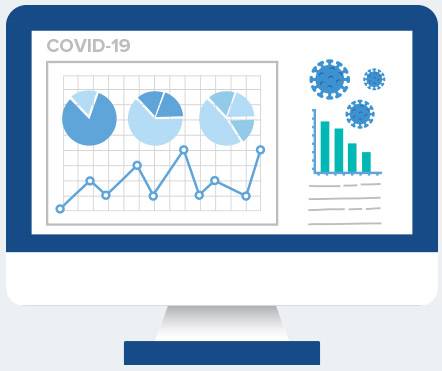In the midst of the COVID-19 pandemic, we know that it may be difficult for practice managers and providers to make the time needed to closely manage their revenue cycle. As it stands, many of you are struggling to meet the demands of your ultimate priority: seeing patients.
Despite the already existing difficulties of patient management, state and local regulations as well as the nature of the rapidly spreading virus have forced many practices to send non-essential staff home. This in itself has the potential to cause undue revenue strain, when salaried staff are sent home with no means of performing their job. But we may have a solution. Practices faced with the dilemma of paid employees sent home but needing to work may be able to redirect these at-home employees’ time to focus on back-office support.
For those practices, it’s helpful to keep a list of “housekeeping” tasks that always need to get done but are easy to continuously put off. Many practices will have a similar list. Fortunately, this is an ideal time to reap the benefits of being able to have your staff login to their PM/EHR system remotely.
So, if your staff is remote or not otherwise focused on seeing patients, here’s a list of effective tasks and projects we suggest they direct their attention to:
1. Wrap it up: Resolve Open/Saved Encounters
Take advantage of the quieter, less-hectic environment at home and tackle your charges. Refer to any notes as-needed to be sure the encounter documentation is as accurate as possible. Remember that accurate documentation at the beginning of the billing cycle is key to appropriate reimbursement at the end of the cycle. Tie up any loose ends on pending/saved charges so that they can proceed to the next stage of their life cycle – billing.
2. Get it out: Reduce Your Billing Lag
The side effect of a delay from the provider in closing an encounter is often a billing lag. Once you know the provider has completed their part of the encounter, regularly refreshing your system queue allows you to bill pending charges that may have been waiting for the provider to submit additional information/documentation. To maximize on any pending billing, be sure to review the system for any claims rejections and/or CIQ errors that require your attention.
3. Balance the books: Reduce Posting Lag
Delays in posting payments can artificially inflate your accounts receivable and obstruct the true insight of your business financials. In times like these, it’s more critical than ever to understand the financial effect this could have on your business. Although we all strive for 100% electronic remittance rates, there are still enough payers that have not adopted these services to send paper EOBs. Now is the time to reconcile all that paperwork and batch it for posting.
If your paper remittances have yet to be scanned, we suggest one of two options: first, if you have a portable or easily moved scanner and one or two trusted employees that you feel comfortable giving paper remittances to take home, you can ask employees to inventory the remittances, then scan and batch them for posting. Afterward, be sure the paper documents are returned to the practice for storage/shredding.
If that’s not an option, you could bring in one employee once or twice a week to an isolated part of the office and have them scan all paper remittances to upload as batches.
Additionally, consider putting the focus on your unapplied amounts. Use this time to start applying those unassigned funds to the appropriate patients and dates of service to get your books really streamlined.
4. Reply, reply, reply: Respond to Tasks
Replying to tasks, whether internal or generated by interacting with an external RCM team like the experts at CareCloud Concierge can seem time-consuming, but this step is vital to saving yourself time (and money) in the long run. Without additional information or approvals, dollars may be caught behind incomplete protocols, delaying your practice from getting paid. Getting through tasks will help expedite the resolution of pending items, and if one such pending claim warrants a resubmission or follow-up from the payer, could yield revenue.
We suggest you create a project for a group of team members (depending on the length of your task backlog) and set an achievable goal of tasks to be completed each day. Check in with staff at the end of the day (or every couple of days) and see how they’re progressing. Suggest that they try to work through the easier tasks first (those that can be responded to in less than a few minutes) and leave the more complex ones for later.
5. Out with the old: Settle Bad Debt
To gain true visibility of your finances, what is better time than now to address the unrecoverable accounts receivable? Target your outstanding balances from oldest to newest, determine what you know will no longer be recognizable revenue (whether it’s insurance or patient responsibility) and get it off your books. Settling bad debt on a monthly basis moving forward can keep this process as accurate and painless as possible.
6. Put pen to paper: Document Your Processes
This is an opportunity for you to document your processes regarding Revenue Cycle Management like you’ve never done before. The reason most practices don’t have clear and concise documented processes is simply a lack of time. With time now on hand, you may even want to think about the implementation of new processes to existing workflows. What could help to optimize efficiencies/effectiveness around daily best practices like patient collections? What about insurance collections or eligibility verification? One helpful tip: think about the source of the most stress and frustration in the office. Whether it’s eligibility verification errors that lead to lost revenue or insufficient patient collections, the number one practice sore spot is often the best place to start.



